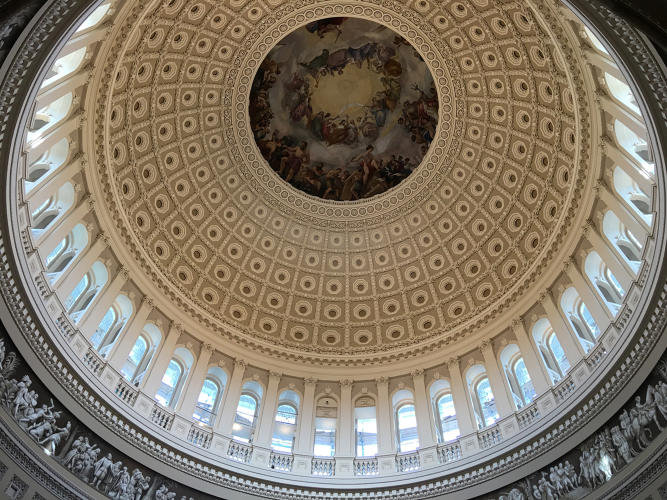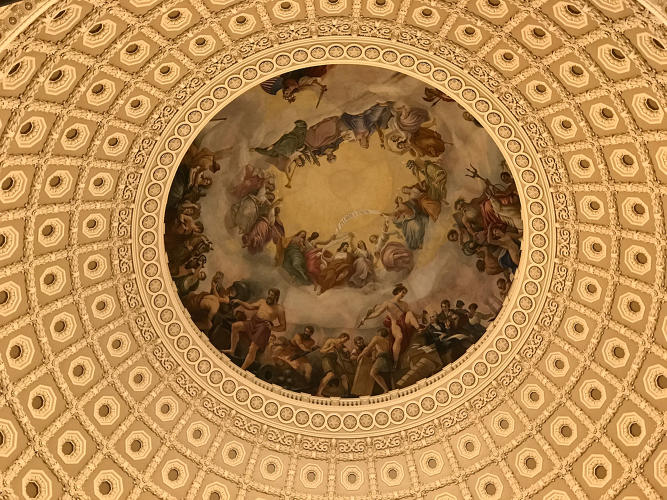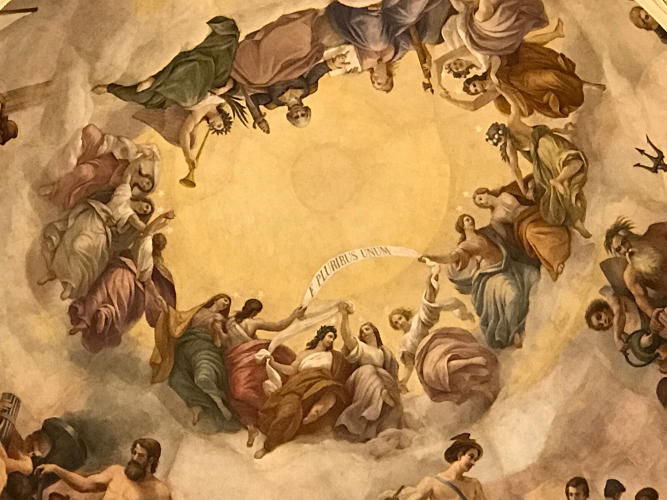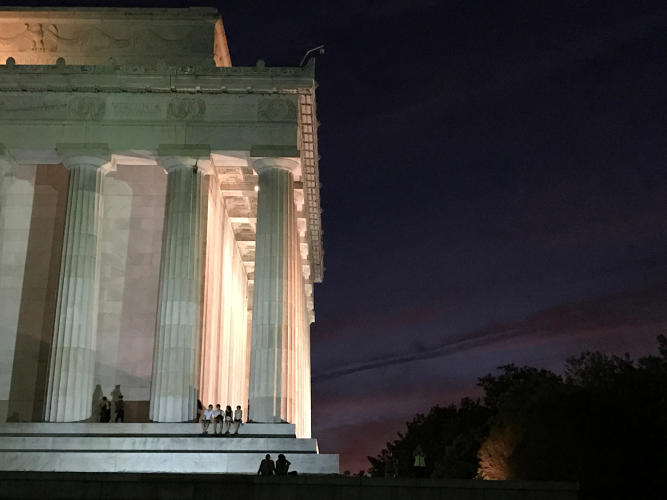The iPhone 7 Plus’s Dual-Lens Camera, Tested By An Award-Winning Photojournalist
The new dual-lens camera of the new iPhone 7 Plus is possibly the most significant upgrade to an iPhone camera ever.
The iPhone 7 camera’s 28mm wide angle lens now has an aperture of f1.8, which allows 50% more light to reach the sensor. And the additional 56mm lens, Apple says, will have a number of implications for photo quality.
The improved aperture and the new lens, taken together, make the iPhone 7 Plus camera a far more capable tool for both amateur and pro photographers. But they also make it a more complex one. So we went to photographer Brooks Kraft for help testing the performance of the camera’s new features. Kraft covered the White House for Time from 2001-2011 (spanning both the Bush and Obama administrations) and was named International Photographer of the Year in 2013.
Kraft was one of a handful of professional photographers who got an iPhone 7 Plus from Apple to test in advance of the smartphone’s release on September 16. He came away believing iPhone 7 Plus camera represents a major leap forward in iPhone photography and in smartphone photography in general. He was impressed with the optical zoom, color accuracy, and low-light performance of the dual camera. However, Kraft is less convinced of Apple’s claim that the iPhone 7 Plus’s longer zoom capability (which, once you get past 2X, is digital, not optical) is really dramatically better than the digital zoom on earlier iPhones.
To demonstrate the specific differences in the new dual-lens camera versus those in the last few generations of iPhones, Kraft shot a series of photos in his home town of Washington, D.C., with both the iPhone 7 Plus and the iPhone 6 Plus. He chose shots that would best demonstrate the quality differences in specific aspects of the phone’s cameras.
Optical Zoom Still Beats Digital Zoom
In the slideshow above, you’ll see a number of photos that Kraft took within the newly remodeled U.S. Capitol building’s rotunda. He shot straight upwards at the intricately painted mural on the ceiling at the top of the dome. The subject provided a perfect test image because of the nuances of its textures, the fine details of the paint, and the effects of the sunlight entering through the sides of the structure.
Kraft demonstrates clearly the iPhone 7 Plus’s improvement over the iPhone 6 Plus in shooting 2X zoom images. That’s because the iPhone 7 Plus’s additional 56mm lens uses real optical zoom at 2X, while the iPhone 6 Plus must rely on a digital process to create a 2X zoom. “So essentially what they’re doing in the iPhone 6 is just blowing pixels up,” Kraft told me.
By contrast, photos shot with the iPhone 7 Plus at 2X offer a degree of clarity and detail we’re not used to seeing in smartphone photos. For many users, this improvement alone may justify paying the $100 premium to get the more expensive iPhone 7 Plus with its dual-lens camera. (Analysts estimate that the dual-lens camera adds an additional $30-$40 to Apple’s component costs for the Plus.)
These images are small pieces cut from both the iPhone 6 Plus and the iPhone 7 Plus shots of the Capitol Dome interior. They’re blown up to 200% to show the differences in image quality caused by optical versus digital zoom:


The new 10X zoom on the iPhone 7 Plus—the iPhone 6s Plus went only to 5X—doesn’t manage to do away with all the limitations of digital zoom technology. “Once you go beyond the 2X offered optically with the new lens, image quality deteriorates,” Kraft says. But he adds that the improved 7 Plus camera does take better pictures at long zoom ranges than the iPhone 6s Plus. “The iPhone 7 Plus is better than the iPhone 6 Plus at 5X zoom, but then the 7 Plus is better all around, so it’s hard to say if the actual zoom effect is improved.”
Overall, Kraft advises users to stick with the iPhone 7 Plus’s 1X and 2X optical zooms when image quality counts. “There are incremental improvements in zoom due largely to overall image improvements I believe, but [longer] zoom should be used only when image quality is not important,” Kraft said. “I do not recommend using it indoors or in low light.”
Low-Light Shots Are A Highlight
The new lens in the iPhone 7 Plus has an improved aperture of f/1.8, which means it lets in 50% more light than previous models in the iPhone 5 and 6 series, which used a f.2.2 aperture. This significantly improves the iPhone 7 Plus camera’s performance in low-light situations, Kraft says. As a result, it’s now easier to take photos without flash indoors, as well as photos shot outside at dusk and even near-dark (see examples in slides #7 and #8, and #11 and #12).
The optical image stabilization (OIS) system used in the iPhone 6s Plus is now built into both the iPhone 7 and the iPhone 7 Plus cameras. The feature is meant to address the problem of shaky hands, which can create blurred images, especially in low light. For many people using the smaller 4.7-inch iPhone 7, the OIS will create obvious improvement in shot quality. However, Kraft believes that the image stabilization system in the 5.5-inch iPhone 7 Plus is similar to that in the iPhone 6s Plus. And it’s only available with the 1X lens, not when you zoom in further.
Some of the image quality improvements in the iPhone 7 Plus camera result from improvements in the image processing software. “iPhones continue to excel at providing excellent color in a variety of lighting environments, in many cases better than high end DSLRs,” Kraft said.
The improved image signal processor is built into the A10 Fusion chip that powers the iPhone 7 Plus, Apple says. The company explains that when you take a photo or video, the ISP conducts “over a 100 billion operations” and uses machine learning to analyze the subject and adjust the camera settings for best results.
You can see noticeable improvements in detail, color rendering, and pixel structure over the iPhone 6 Plus, owing to the new image signal processor in the new camera, Kraft said. He says the improved software helps create the improved detail in the shadows of pictures shot in low light. You can see the improved low-light detail in image #7 in the slideshow: the details of the man’s clothing are more apparent in the shot taken using the iPhone 7 Plus camera versus the iPhone 6 Plus camera, Kraft points out.
Apple built a whole new method of analyzing and reproducing colors in the iPhone 7 Plus, and it can easily be seen in the results. “Apple’s new Wide Color Capture color space renders noticeably better color than in the 6 series,” Kraft said.
Where Do We Go From Here?
Apple’s engineers, Kraft believes, are far from done working on the iPhone’s camera. As a working photographer he has definite ideas about how the dual-lens camera could and should be improved in future iPhones. Here are the big ones:
Kraft said he hopes Apple will make the dual-lens camera available in all phone models, not just the Plus version. “I’m a person who likes the smaller phone size; it’s just easier to carry,” Kraft said. “But I want the two lenses.” (Of course, the 7 Plus’s larger case provides more space for Apple to cram in two lenses.)
He would like a little bit more width in the iPhone’s 28mm wide angle lens. “I would like to see Apple take the 28mm lens to 24mm,” Kraft said. “For shooting landscapes and environments, it would make a big difference,” he said. (In camera lenses the millimeter sizes refer to the focal length, or the distance between where the light rays cross each other inside the camera and where they meet the sensor. Wider lens angles create shorter focal lengths, and vice versa. Find a more detailed explanation here.)
Kraft says he would like to see Apple add some manual control settings for aperture and shutter speed, as well as continue to make significant improvements in image resolution. (Third-party camera apps such as VSCO do offer more manual settings, including shutter-speed control.)
Overall, though, he gives the new iPhone 7 Plus camera high marks: “On balance, the iPhone 7 camera is the biggest improvement in recent generations, and the benefits are likely to be noticed by consumers and professionals alike,” Kraft said. “If the camera is an important element of your mobile experience, there is definite incentive to upgrade.”
The Capitol Rotunda in D.C. has been undergoing remodeling inside and out, and the inside has just been finished and re-opened to the public. This iPhone 7 Plus shot of the interior dome demonstrates the color accuracy and clarity of the phone’s 28mm lens.

The Capitol Rotunda shot with the iPhone 6 Plus camera produces a dramatically different color output, and one that’s less like what you see with your own eyes looking up at the painting from below.

This iPhone 7 Plus shot using the phone’s 56mm lens demonstrates another clear improvement over earlier iPhone cameras. It’s an optical zoom, which creates a far better result than digital zoom.

This shot taken with the iPhone 6 Plus shows the dramatically different result produced by the camera’s digital zoom. The differences in color and temperature in this shot versus the same one taken with the iPhone 7 Plus are remarkable.

Beyond 2X zoom, the iPhone 7 Plus has to rely on digital zoom, just like the iPhone 6 Plus. This shot, taken with the 5X zoom setting on the iPhone 7 Plus, beats the same one taken with the iPhone 6 Plus, but probably not necessarily because the zoom function itself is better. It’s more likely the cumulative result of the iPhone 7 Plus camera’s image processing, aperture, and sensor improvements.

As the zoom gets more extreme the differences in the test photos become more apparent. This shot taken at 5X zoom by the iPhone 6 Plus lacks some of the detail and clarity of the iPhone 7 Plus shot. It also shows a very different color dynamic.

Since the iPhone 7 has a f1.8 aperture, more light is let into the chamber by the shutter. So low-light photos are clearer and less grainy-looking, here demonstrated in a shot of the Lincoln Memorial at dusk taken with the iPhone 7 Plus, then the iPhone 6 Plus. Note the better detail in the shadowy areas and the more vibrant colors in the clouds.

This low-light shot taken with the iPhone 6 Plus has less detail and less accurate color than its cohort shot with the iPhone 7 Plus.

In this interior Capitol Rotunda shot, the iPhone 7 Plus’s wide angle lens produces high contrast levels (sharpness), lots of detail, and vivid colors. The iPhone 7 camera uses a new Wide Color Capture color space and a new image signal processor to create these results.

Compared to the same shot taken using the iPhone 7 Plus, this iPhone 6 Plus shot looks dull, as though it was shot through a piece of clear plastic, Kraft says.

It’s nearly dark in this photo at the Washington Monument. Shooting photos with a smartphone camera—even the iPhone 7 Plus’s—in such low light is “really pushing the envelope,” as Kraft puts it. You can still see a certain amount of graininess in the darkening sky, but less so than with earlier iPhone cameras.

At first glance, this shot taken with the iPhone 6 looks similar to its cohort shot on the iPhone 7 Plus, but the lines of the columns are less distinct and the pixelation in the dark sky in the background is worse.

Fast Company , Read Full Story
(53)














